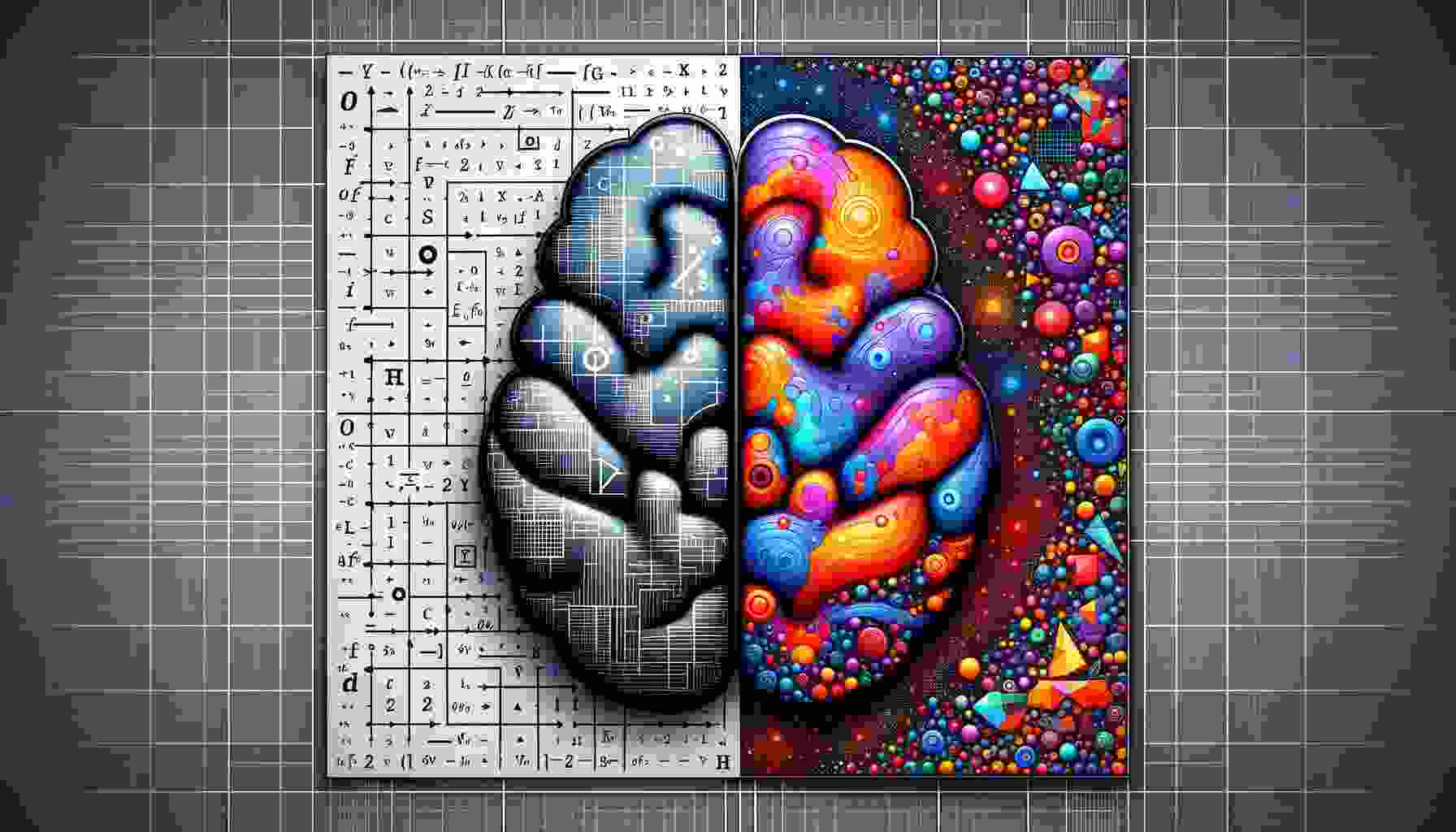Decision Theory, an essential component in artificial intelligence (AI), is a field of study that examines how choices are made when outcomes are uncertain. It combines elements of psychology, economics, and mathematics to understand and guide decision-making processes. In AI, Decision Theory is instrumental in developing algorithms that make predictions or choose actions under uncertainty, enhancing the efficiency and effectiveness of AI systems.
In this article, we will entail what is decision theory in detail along with its classification, approaches, and everything you want to know about it. So don’t stop! Keep reading this article written by machine learning specialists at allaboutai.com.
What is Decision Theory – How Computers Make Choices
Decision Theory is like a set of rules that helps computers make choices when they’re not sure what will happen next. Imagine you’re playing a video game and you have to decide whether to take the safe path or the risky path to find treasure, but you don’t know what dangers might be on the risky path.
Decision Theory helps the computer decide which path to choose by thinking about how risky or safe each choice is, kind of like how you might decide in the game. It uses ideas from how people think, how we use money, and even a bit of math to make these choices smarter. This helps computers and robots get better at making decisions, especially when they’re not sure what to do.
What is Decision Theory? – An Overview
Now that you briefly understand what is decision theory, let’s take a quick overview of it.
Rational Choice:
This principle asserts that decisions should maximize the expected utility, aligning with the decision-maker’s preferences and goals. It forms the basis of many economic and behavioral models.
Uncertainty Management:
This concept deals with the inherent unpredictability in decision-making processes, especially in complex systems like AI, where outcomes can’t always be predicted with certainty.
Optimization:
A key aim in AI, optimization involves finding the best solution from all feasible choices, often using algorithms to process vast amounts of data.
Risk Analysis:
This involves assessing the potential downsides of decisions, quantifying risks, and incorporating them into decision-making, a crucial aspect of AI for managing unpredictable environments.
Utility Theory:
This theory measures the satisfaction or benefit derived from different outcomes, helping AI systems to weigh options and make decisions that maximize perceived value.
The Essence of Decision Theory:
The Essence of Decision Theory in AI encompasses normative ideals like rationality and efficiency, and descriptive realities such as heuristics and biases, shaping AI’s structured, data-driven decision-making process.

Normative Aspects
Normative decision theory sets ideal standards for decision-making:
Rationality:
It suggests decisions should be made based on maximizing utility, aligning with logical and consistent reasoning.
Consistency:
It involves maintaining coherence in decision-making across different scenarios and over time.
Transparency:
This entails clear and understandable decision-making processes, crucial for AI systems to be trusted by users.
Predictability:
It focuses on making decisions that lead to expected, reliable outcomes.
Efficiency:
It advocates for making the most effective use of resources, minimizing waste and maximizing outcomes.
Descriptive Aspects
Descriptive decision theory explains how decisions are actually made:
Heuristics:
These are mental shortcuts or rules of thumb that simplify decision-making, often used in AI for quick approximations.
Biases:
Cognitive biases can influence decisions, and understanding these is crucial for developing AI systems that make objective, fair decisions.
Emotion:
Emotional factors can impact human decisions, and AI systems may need to consider these when interacting with humans.
Social Influence:
Decisions can be influenced by social factors, such as norms or peer pressure, which can be relevant in AI applications like social media algorithms.
Experience:
Past experiences heavily influence decision-making, and in AI, this translates to learning from historical data to improve future decisions.
Decision-Making Process
In AI, decision-making is a structured process involving data analysis, probability assessment, and selecting the best course of action. This process is integral to managing uncertainty and leveraging information to make informed decisions.
Theoretical Foundations: Probability and Decision Stages
Now that we understand “What is Decision Theory?” let’s examine the crucial role of probability in decision-making processes and the various stages involved in making well-informed, rational choices.

Integration with Probability Theory
Decision theory and probability theory are closely linked:
Outcome Prediction:
Probability helps in estimating the likelihood of different outcomes, which is fundamental in AI for planning and prediction.
Risk Assessment:
Assessing risks using probability calculations enables AI systems to make more informed decisions.
Statistical Analysis:
Statistical methods are used to analyze data, helping AI systems to understand patterns and make predictions.
Probability Models:
These models are used to represent complex systems and predict future events, essential in AI for simulations and forecasting.
Uncertainty Reduction:
Probability assessments are used to reduce uncertainty, a key challenge in AI, especially in dynamic environments.
Classification and Decision Stages
The decision process in decision theory can be broken down into stages:
Information Gathering:
Collecting relevant data is the first step, crucial for AI systems to have a solid foundation for making decisions.
Analysis:
This involves breaking down and understanding the data, which in AI is done through algorithms and machine learning techniques.
Prediction:
AI systems use predictive models to anticipate potential outcomes, a key application of decision theory.
Evaluation:
Different decision paths are evaluated based on their potential outcomes and risks.
Implementation:
Finally, the chosen decision is implemented. In AI, this often means executing a specific action or output.
Decision Regions and Surface Concepts
Decision regions and surface concepts are fundamental in machine learning and pattern recognition. They involve dividing a feature space into sections, each representing a specific class.

This division, based on learned patterns from training data, is visually represented by decision surfaces, which act as boundaries separating different classes. Understanding these concepts is crucial for interpreting and improving classification models.
Decision Regions:
These refer to specific areas within a feature space where a certain decision or classification is made. Essentially, each region corresponds to a different class or outcome.
Decision Surfaces:
These are the boundaries within the feature space that demarcate different decision regions. Essentially, they are the lines or planes that separate one class from another in the feature space.
Role in AI:
In artificial intelligence, particularly in machine learning, decision regions and surfaces are integral for classifying and predicting data patterns. They are the foundation upon which many classification algorithms base their predictions.
Application:
These concepts find widespread application in various AI domains, such as image recognition, where they help in identifying objects within images, and natural language processing, where they aid in understanding and classifying textual data.
Importance:
The use of decision regions and surfaces significantly enhances the accuracy and reliability of AI decision-making processes, ensuring more precise and dependable outcomes.
Linear Classification and Hyperplanes
Linear classification and hyperplanes are central to understanding how many machine learning algorithms operate.
Linear Classification:
This approach involves categorizing data based on linear relationships between features. It’s a common method in machine learning for its simplicity and efficiency, particularly suitable for problems where a straight line can approximate the relationship between variables.
Hyperplanes:
These are geometric constructs that function as boundaries in a feature space, aiding in the classification of data. In a two-dimensional space, a hyperplane is a line, while in three-dimensional space, it’s a plane, and so on.
Simplification:
The use of hyperplanes simplifies the decision-making process by reducing complex relationships in the data to linear equations. This makes it easier to analyze and visualize the data, especially in high-dimensional spaces.
Efficiency:
Employing linear classification and hyperplanes improves the speed and accuracy of AI algorithms. These concepts allow for quick computations and straightforward interpretations, which are particularly beneficial in large-scale and real-time applications.
Versatility:
These concepts are highly versatile and can be applied in a range of AI scenarios. From basic classification tasks to more complex pattern recognition challenges, linear classification and hyperplanes provide a robust framework for analyzing and interpreting data.
Approaches to Decision Theory in AI
Decision theory in AI involves using mathematical models and algorithms to make optimal choices under uncertainty. It integrates probability, statistics, and game theory to guide AI systems in decision-making processes.

Probabilistic Generative Models
Probabilistic generative models aim to understand how data is generated by modeling the underlying probability distributions. This approach is beneficial in AI as it allows for a deeper understanding of the data, aiding in more accurate predictions and decision-making.
Probabilistic Discriminative Models
These models focus directly on the relationship between observed data and labels. They are particularly useful in AI for tasks where the priority is on prediction accuracy, such as classification tasks in machine learning.
Discriminant Functions
Discriminant functions in AI are used to classify data by determining which category a new observation belongs to. This is achieved by learning patterns from existing data and applying these patterns to make decisions about new data.
Future of AI and Decision Theory
The future of AI and decision theory is poised to evolve with advancements in computational power, algorithmic complexity, and data availability, enhancing decision-making accuracy and adaptability in dynamic environments.
Neuroscience Integration:
Incorporating insights from neuroscience can enhance AI’s decision-making capabilities by mimicking human thought processes.
Data Ethics:
As AI becomes more prevalent, ethical considerations in decision-making become crucial to ensure fairness and avoid bias.
Enhanced Predictive Models:
Developing more sophisticated models will improve AI’s ability to predict and make decisions.
Customization:
Tailoring AI solutions to individual needs will enhance their effectiveness and user experience.
Sustainability:
Ensuring AI systems remain effective and efficient over time is vital for their long-term viability.
Decision Theory’s Role in AI’s Future
Decision theory will play a crucial role in AI’s future by providing frameworks for rational decision-making, enhancing predictive capabilities, and informing ethical considerations in increasingly autonomous AI systems.
Advanced Decision-Making:
AI systems will become more sophisticated in their decision-making capabilities, handling more complex tasks and scenarios.
Ethical AI Development:
Decision theory will play a key role in guiding AI towards making ethical and fair decisions.
Personalization:
AI will become more adept at personalizing experiences and decisions for individual users.
Complex Problem-Solving:
AI will increasingly be used to solve complex, real-world problems, with decision theory guiding its approach.
Evolutionary Development:
Decision theory will continue to evolve and adapt, contributing to the ongoing development and sophistication of AI technology.
Want to Read More? Explore These AI Glossaries!
Immerse yourself in the world of artificial intelligence with our thoughtfully curated glossaries. Whether you’re a novice or an expert, there’s always something new to uncover!
- What is Admissible Heuristic?: An admissible heuristic plays a critical role in guiding artificial intelligence decision-making processes.
- What Is Affective Computing?: Affective Computing aims to imbue machines with emotional intelligence, allowing them to perceive and respond to human emotions in a nuanced manner.
- What Is An AI Accelerator?: An AI accelerator is a specialized hardware or software component designed to accelerate the performance of AI-based applications.
- What is Ambient Intelligence?: Ambient intelligence refers to the seamless integration of smart devices and systems into our surroundings, creating an environment that responds intelligently to human needs.
- What Is Answer Set Programming?: Answer Set Programming is an advanced form of declarative programming that targets complex search problems, especially those that are NP-hard.
FAQ’s
Here are some of the most commonly asked questions about the topic other than decision theory.
What is a Decision Model Theory?
What are the 4 Types of Decision Theory?
What is Decision Theory Also Called?
What is the Formula for Decision Theory?
Conclusion:
Decision Theory is a critical and complex field, especially in the context of AI. It encompasses various approaches to understanding and guiding decision-making processes. Whether it’s the logical rigidity of normative decision theory, the real-world observations of descriptive decision theory, the practical guidance of prescriptive decision theory, or the human-centric focus of behavioral decision theory, each plays a vital role in enhancing our understanding of choices and decisions.
In this article, we have explained what is decision theory? in detail. To learn more about AI terms and concepts like this, do check out other articles in our AI Glossary Book.





